When a building runs exactly as it should, chances are there’s a certified commissioning agent behind the scenes. Think of them as a quality control expert for buildings – checking designs, testing systems like heating, cooling, and lighting, and ensuring everything works efficiently and as intended, well into the future.
Wouldn’t it be nice to have a partner who only has your project’s success in mind? Well, that’s exactly what a certified commissioning agent is for! These professionals bring specialized training to oversee the commissioning process for building operations. Acting on behalf of the building owner, they ensure that systems perform to both their project specifications and industry standards.
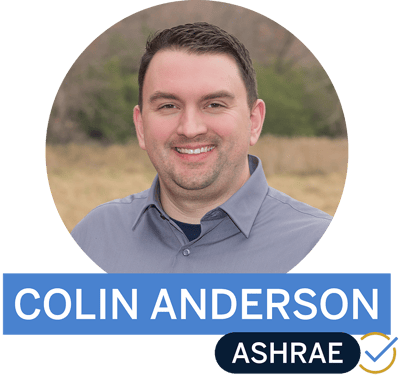
It’s safe to say they’re a VIP player on any project team. At SEH, our VIP player is Colin Anderson, a certified commissioning agent through the American Society of Heating, Refrigerating and Air-Conditioning Engineers (ASHRAE). From acting as a third party to viewing projects from the commissioning perspective, Colin offers a rare glimpse into this niche industry.
Let’s Start with the License
It’s no exaggeration to say, “rare glimpse.” As of January 2025, Colin was one of only thirteen certified ASHRAE commissioning agents in Minnesota. When looking at certifications, Colin had a strategic reason for choosing ASHRAE:
ASHRAE is the one developing the standards and guidelines that dictate commissioning. So, we wanted to be certified with that organization. States are now adopting ASHRAE 90.1 as their energy code. For example, Minnesota's adoption of 90.1-2019 as its energy code went into effect in 2024, so the commissioning requirements are still something new.
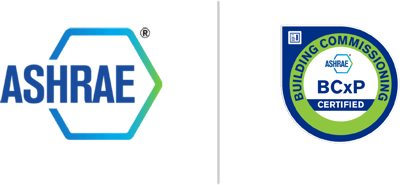
Pursuing certification through ASHRAE was an in-depth process. Candidates need extensive project experience in multiple categories and to participate in several commissioning projects. Then there’s the certification exam. As Colin recalls, “I’ve got over 100 pages of notes from studying for this exam.” After this rigorous preparation, he was ready to hit the ground running as soon as he earned his Building Commissioning Certification (BCxP). And unlike a professional engineer (PE) certification, which must be obtained for each state, the BCxP is recognized nationwide and even globally.
Breaking Down the Job
Commissioning Agents serve as an independent third party, ensuring that a building’s systems – such as HVAC, lighting, and controls – are designed, installed, tested, and maintained to meet the agreed upon standards of the building’s owner. Their expertise boosts performance, enhances energy efficiency, and addresses any issues, providing long-term value.
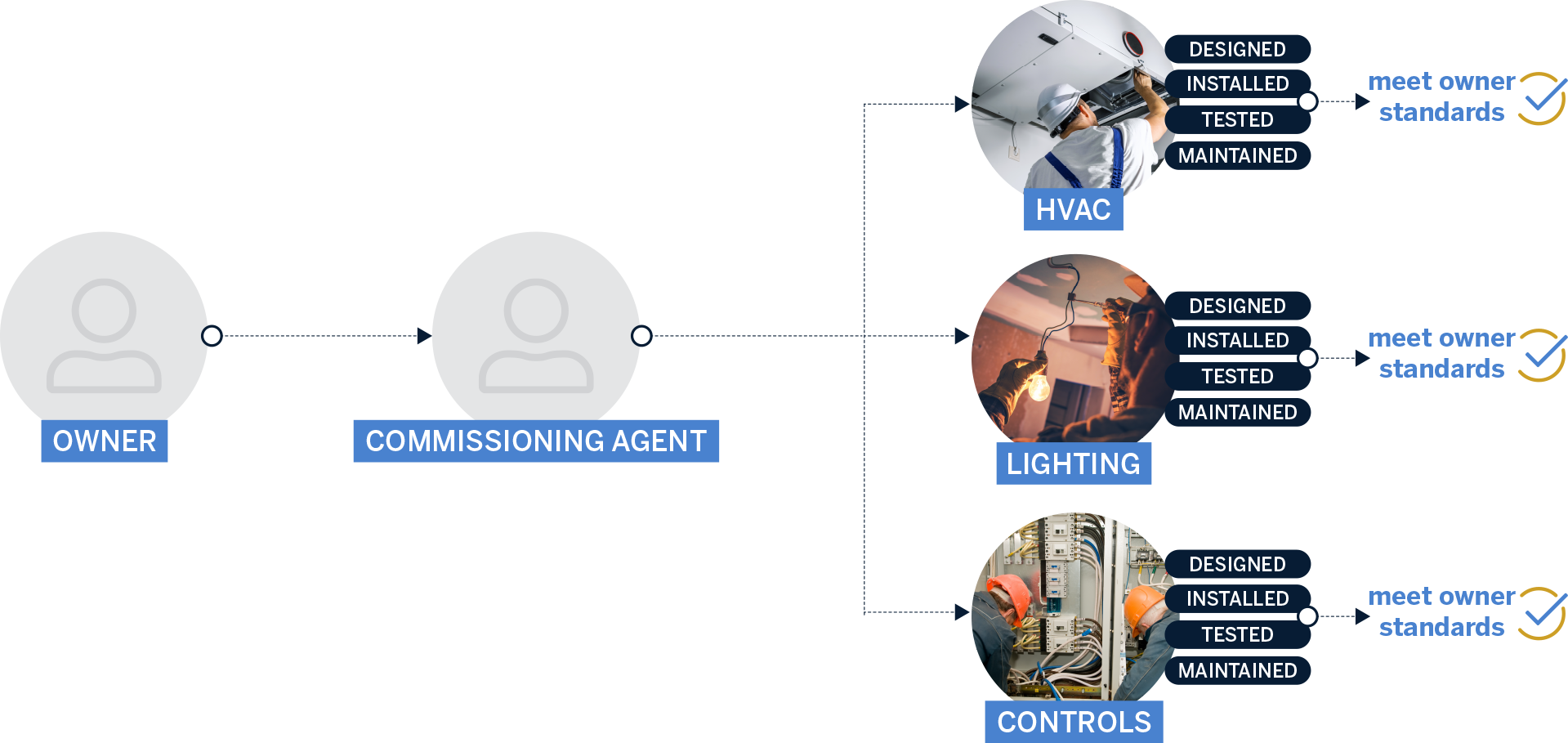
As Colin describes, the commissioning agent’s role starts with clear goals:
Right from the beginning of a new project, you are representing the owner, and you create documents that define what success means to them. For example: Do they want energy recovery? LEED? Do they need to meet Minnesota B3 requirements? Things like that – anything specific that they want to see in the success of the project.
We review project documents, submittals, and specifications, all in comparison to see if everything aligns with the initial goals. If it's full commissioning, we would start during design and go all the way through construction and then a year beyond. We go out and test everything, and then you do a warranty evaluation 10 to 12 months later. If any issues arise, we work on strategic solutions. Say a year later, specific spaces are staying too warm/cold all the time. We'll go through, reevaluate, and provide recommendations for improvements.

There are four main types of commissioning, each serving a different need.
Full commissioning starts during the design phase of a new project and continues through construction into the first year of operation.
Recommissioning reevaluates a building, usually five to 10 years after initial commissioning, to ensure everything is running smoothly. It’s a time to look at systems, controls, and equipment, offering helpful recommendations to optimize functionality.
Retro commissioning evaluates buildings never previously commissioned to identify and address inefficiencies and opportunities for improvements.
Ongoing commissioning creates a long-term performance plan, outlining reevaluation schedules and providing guidance to maintain efficiency over time.
Acting as a Third-Party Consultant
Maintaining objectivity is crucial, especially when the commissioning agent and design team come from the same company. Colin notes:
The ability to commission a project often depends on the type of project and its funding. For some SEH projects, I may not be able to take on the commissioning role due to specific funding source requirements. However, in general, as per ASHRAE standards, I’m not permitted to be part of the design team, as my role needs to remain independent to maintain objectivity and ensure thorough oversight.
For example, we have a project in Charlottesville, Virginia, where I’m doing the commissioning for an administration and laboratory building, but I’m not touching the design and haven’t done any reviews besides the commissioning work. We don’t want any conflict of interest. It’s also easy for us to add commissioning as a service. We’re able to do commissioning work that’s completely separate from design.
To Commission or Not to Commission

We have clients that know the benefits of commissioning, and they'll just ask for it. They know we’re going to find any issues, and that they’ll have a more successful project.
For instance, we handled a commissioning project for a boiler and chiller upgrade at the City of Eagan’s Community Center in Minnesota. While commissioning wasn’t initially required, we recommended it, and they agreed. During functional testing, we identified several issues, which we were able to address and fix right away, preventing potential problems that might have gone unnoticed without the commissioning process.

And while commissioning is not a guarantee of success, it significantly increases the likelihood of meeting the project’s goals.
Seeing Through a Commissioner’s Eye
Even when Colin works on projects that don’t involve commissioning, he brings a unique frame of reference, looking beyond technical details to be sure everything functions together seamlessly. This dual viewpoint can uncover opportunities or issues that might otherwise be missed, as Colin explains:
I end up doing QA/QC on quite a few projects, and I look at things in a very different light now. I’m used to reviewing as an engineer from the technical side, but now also from the commissioning side. I'll be looking into the design and say, “Well, that can't be balanced. You're missing dampers here, or that's the wrong type of pump for this application.” I'm thinking from a different perspective.
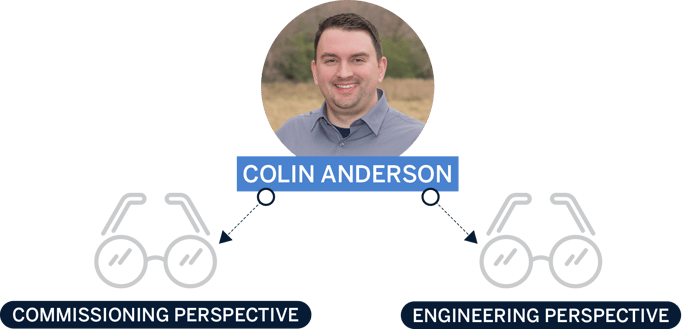
This insight extends to the latest industry trends and technology. As part of maintaining his licensure, Colin continues his professional development and keeps an ear to the ground for innovative systems and practices, mentioning, “Many of the people in our group are ASHRAE members, and we’re always paying attention to new technology and standards – things like greenhouse gas emission reductions and solar projects.”
Meeting environmental goals has been top of Colin’s mind lately as he served as the energy leader for a 30,000-square-foot hangar for the Thief River Falls Regional Airport. Colin prepared several commissioning documents as required for Minnesota B3 compliance, including the owner's project requirements, commissioning plan, and basis of design documents. Due to funding, this project was required to adhere to MN B3 guidelines, which outline sustainability standards, among other criteria.
Related Content: Thief River Falls Regional Airport Cargo Hangar
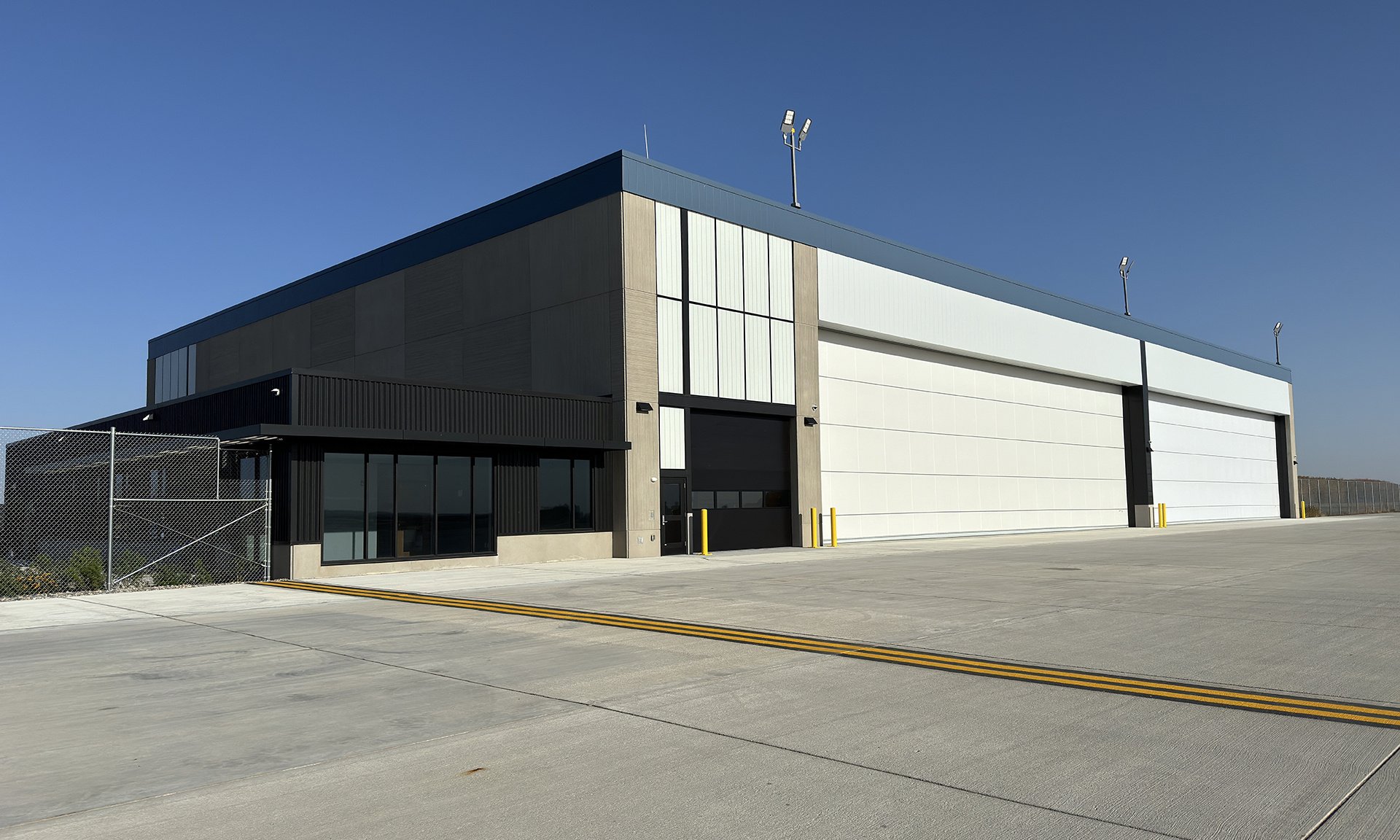
New cargo hangar at the Thief River Falls Regional Airport
The Extra Edge
There’s no doubt Colin is an asset to his team, filling a niche role that expands the capabilities of the mechanical/electrical practice. For Colin, it’s all about the additional advantages his certification offers:
A benefit to having me on the team is that even if the project isn’t required to be commissioned by the energy code or funding source, we could still recommend it. Once a client is aware we have this service, they might think, “That building's not performing very well anymore. Maybe we should call Colin and get it commissioned.”
Within our group, we do a huge range of projects including industrial, distribution design, lighting, controls, and automation systems. I work on water, wastewater, airports, government, architecture, and technology-driven projects. And our team is big enough that I could remain a third party to a project and still commission it without any conflict of interest.

A Package Deal
Just like shopping at a department store, having everything in one place streamlines projects and saves resources. While Colin stresses the importance of a certified commissioning agent, no matter the provider, he highlights a few factors that set his team at SEH apart:
A huge bonus of SEH is that we have everything “under one roof.” When somebody needs a project, we have all disciplines in-house. Everything looks like it came from the same company. It doesn't look like multiple sets of drawings that don't line up perfectly. That can be kind of frustrating, and I can see it with clients.
With us, you’re getting that package deal. We’ve done the legwork and the homework. You have me as a reference and can get a jumpstart on projects, which should save money in the long run versus hiring a third party to start from scratch.
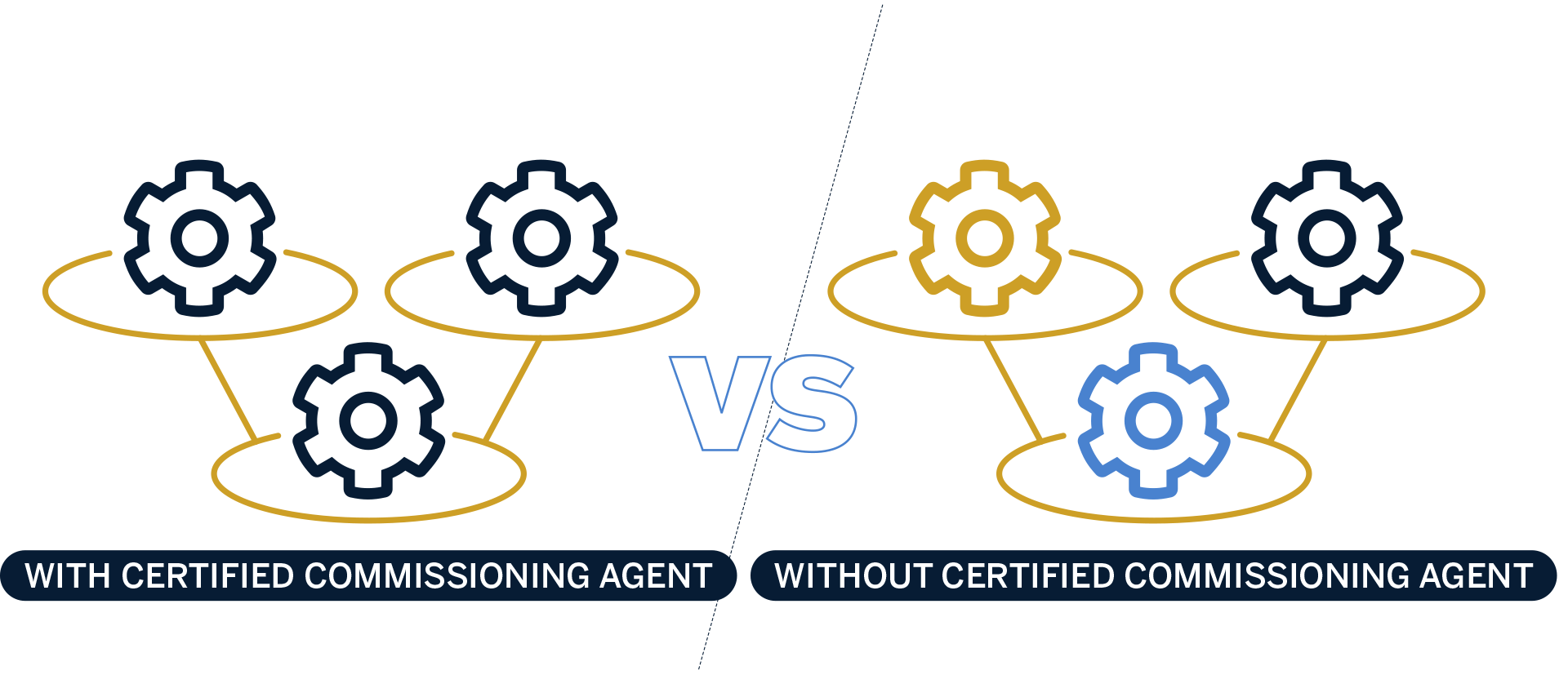
Choosing a Certifiable Difference
Like any skilled operative, Colin stays hidden in plain sight, quietly working under the radar to ensure buildings operate at peak efficiency. Knowing the value certified commissioning adds to any project, he always encourages, “Don’t settle for just anyone – choose someone who’s truly qualified, who’s put in the work and earned the credentials.” When it comes to the performance of your building, that sounds like good advice.
If you’re thinking about commissioning or just want to talk about your next project, reach out to Colin.
About the Expert
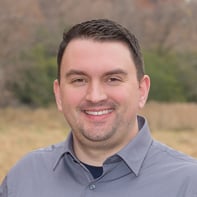
Colin Anderson, PE*, BCxP, is a project manager and certified building commissioning professional through the American Society of Heating, Refrigerating and Air Conditioning Engineers (ASHRAE). His background as a mechanical engineer gives him specific experience working with building equipment to include heating water systems, chilled water systems, air handling equipment, variable air volume terminal units, energy recovery ventilators, and building automation systems (BAS). Colin also has experience in load calculation and modeling programs such as Trane Trace 700 and Carrier HAP, as well as with AutoCAD and Revit MEP.
*Registered professional engineer in MN, NE, OH, KY, TN, TX

.png?width=113&name=SEH_Logo_RGB%20(1).png)
